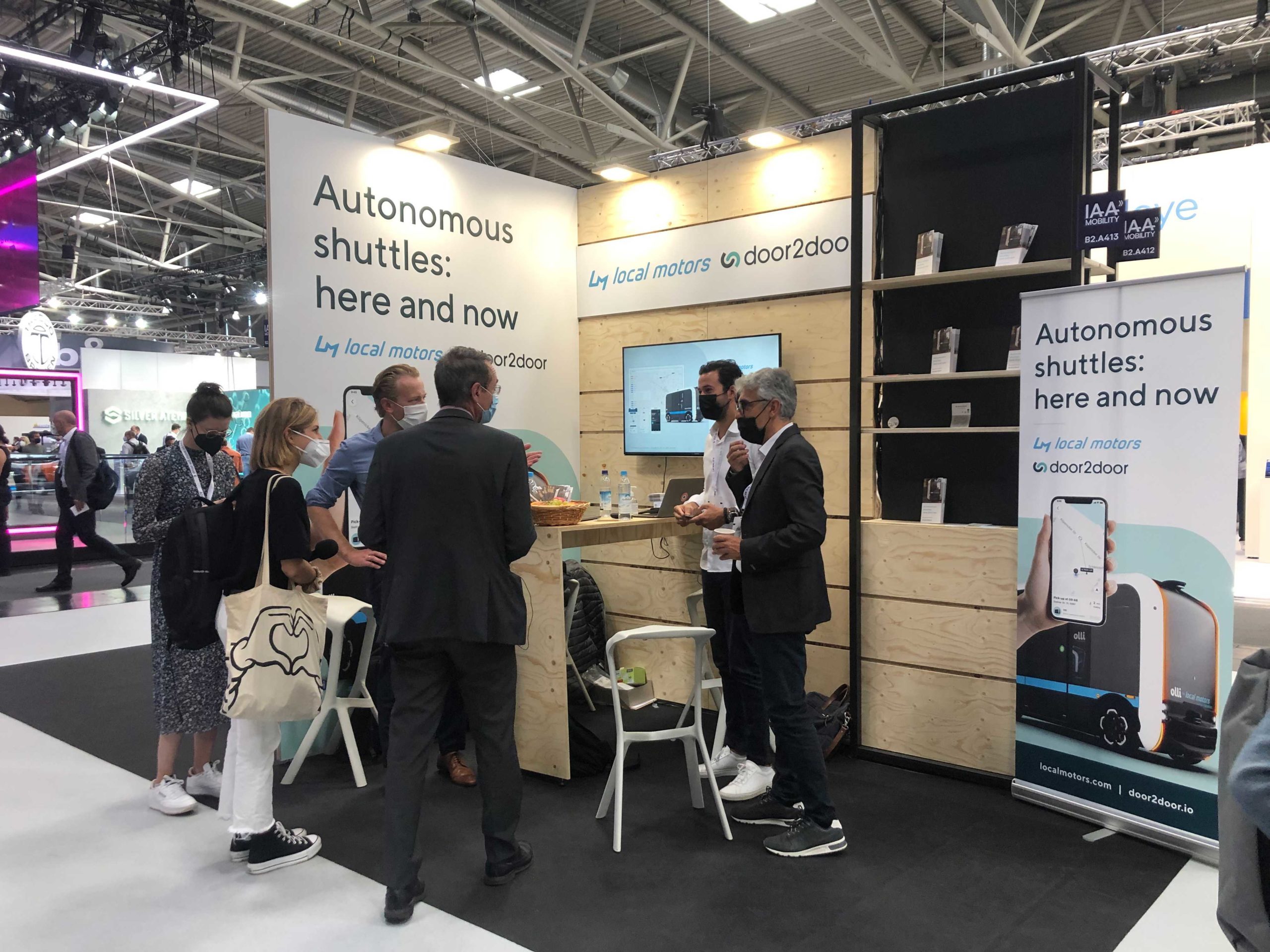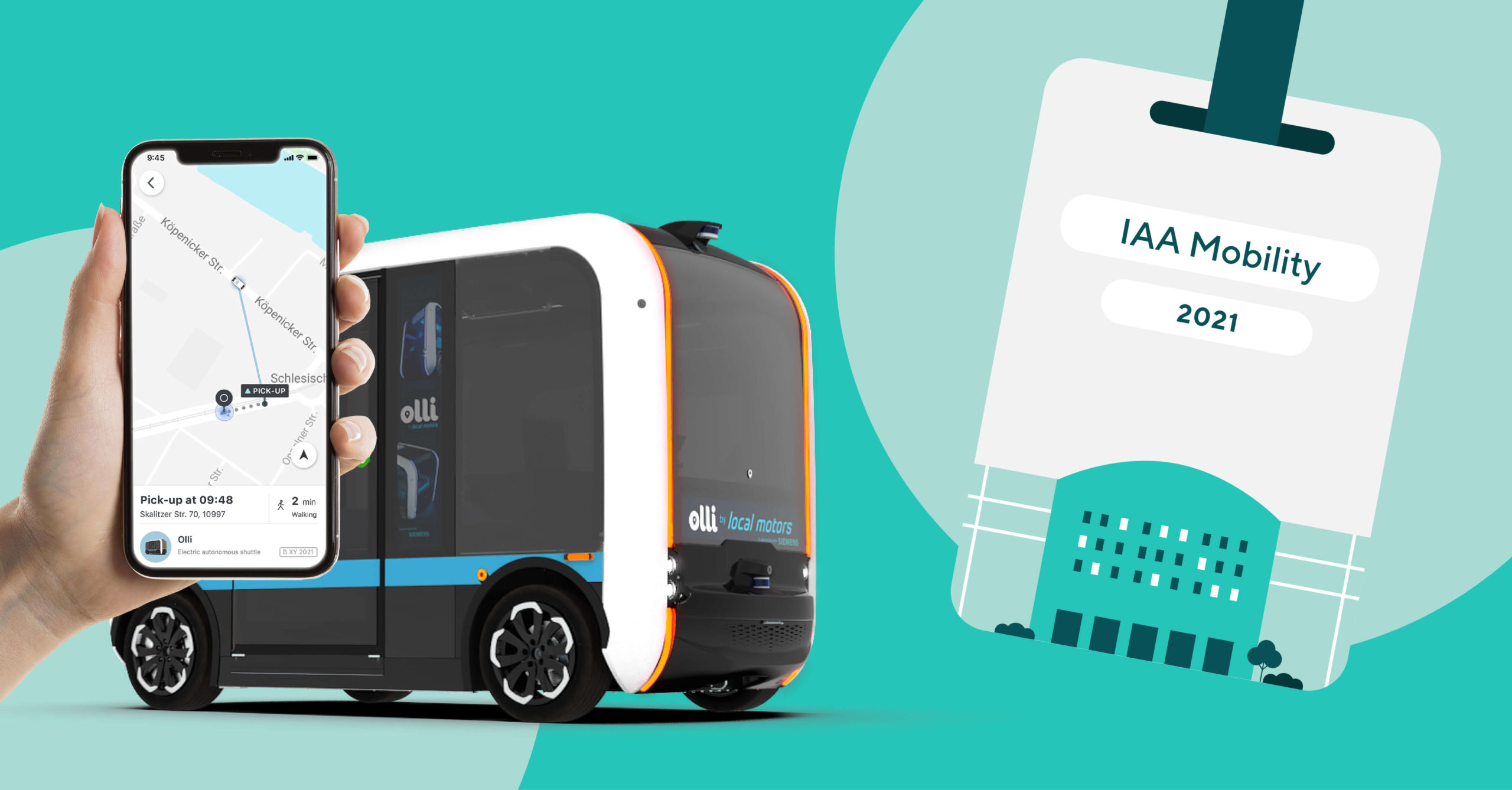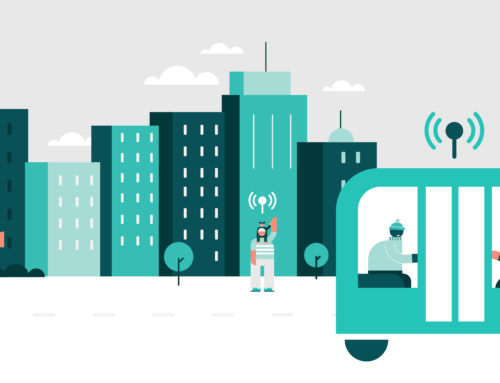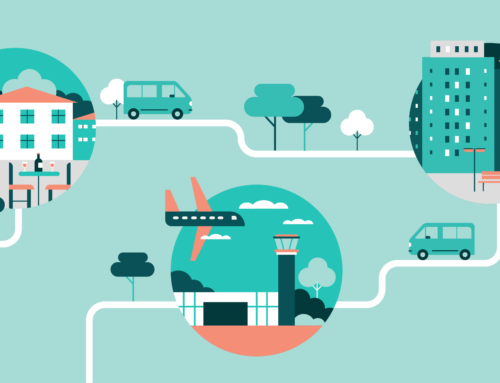Our Head of Business Development Barbara Schmoll answers this question from her perspective in the following article:
“Autonomous shuttles – here and now.” Under this motto, door2door exhibited together with Local Motors at the IAA, thereby presenting exactly what the IAA Mobility intended to showcase this year: Innovative companies that enable sustainable and convenient mobility for all. At an industry dinner, we met with experts from different mobility fields to delve deeper into this topic and discuss specific questions about use cases, business models and cultural impact.
“What will move us next” was the motto of this year’s IAA Mobility. We are working to ensure that autonomous shuttles will move us all very soon and contribute not only to environmental sustainability, but also to public welfare and general quality of life. This is why we were at the IAA Mobility – not only as an exhibitor, but also as speakers in keynotes and various panels.
Our keynotes and panels
I participated in the panels “One Click, All Modes? In Search of the Multimodal Super App” and “Let’s Revolutionize Rural Mobility – From Empty Bus Lines to On-Demand Transport”. In his keynote speech “The Future of Pooled Autonomous On-Demand Mobility Starts Here and Now: In Germany”, our Co-Founder and CEO Dr. Tom Kirschbaum showed how the new autonomous driving legislation in Germany has set the course to put autonomous shuttles on the road right now (see our blog post for more on this). He also shared his expertise in the studio talk on “Electrification and Mobility as a Service”. Our Head of Marketing Anna Mohn took part in the panels “Women in Digital Mobility – Status, Requirements and Outlook in Diversity” and “Open Public Data – Status, Requirements and Outlook for the German Mobility Data Space”.
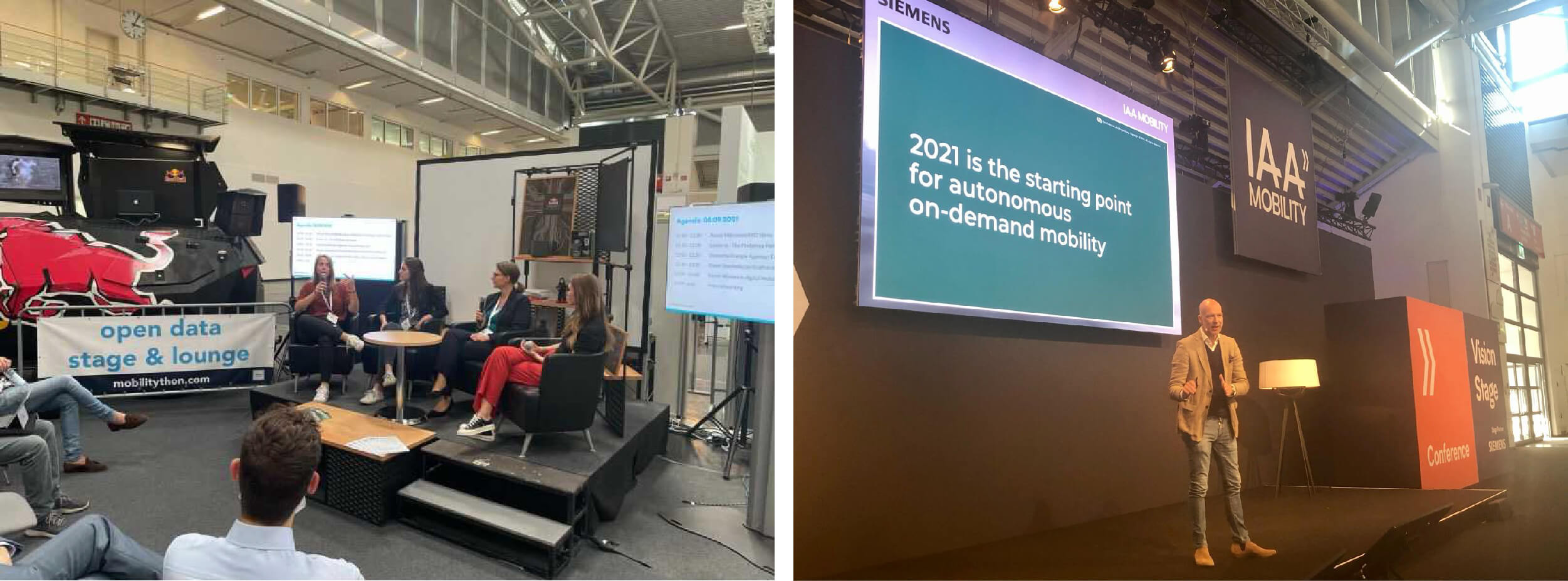
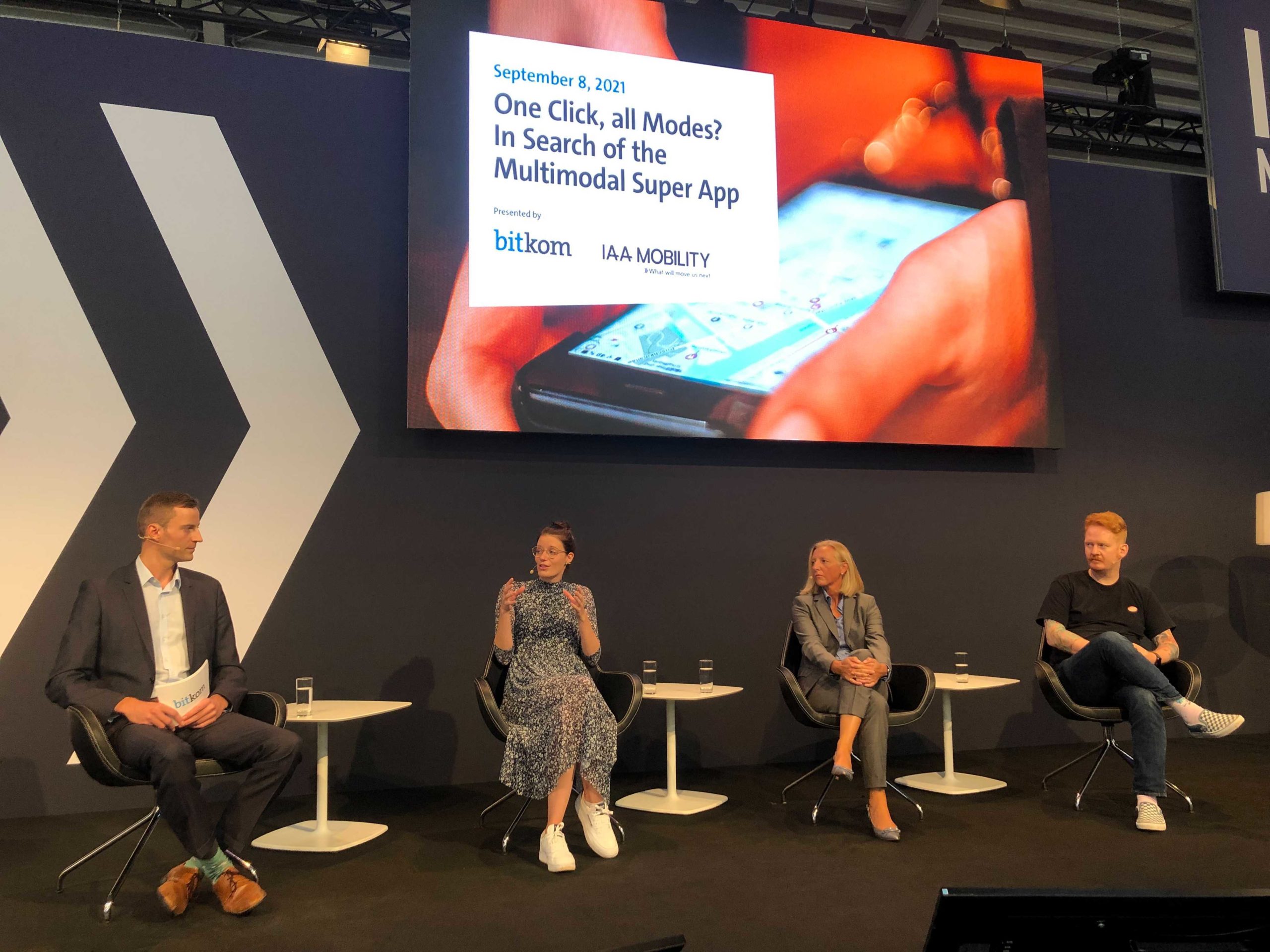
Our contributions are also available digitally and were shared via the virtual page of the IAA Mobility, so that mobility enthusiasts who were not able to travel to Munich could also participate.
The transformation
It was no coincidence that we took part in so many panels, sharing our vision. The panels raised various questions to which we have the answers. How can we succeed in mobilizing rural areas? What kind of infrastructure and data do new mobility offers require? How can we create services that are inclusive and accessible to all? Here we really see that the IAA Mobility has succeeded in bringing about changes. It has brought forth discussions on questions that are important right now. It’s a positive development that with these open formats, the voices of different stakeholders can also have their say and that we are actively shaping the conversation.
One only needed to walk through the exhibition area to realize that we are in the midst of a transformation. Two years ago, visitors were still rushing through the large, pompous halls of the big manufacturers between highly polished, powerful cars. But this year, one could find start-ups next to global players, gravel bikes next to software companies and e-vehicles in abundance. Many from the “old automotive world” were amazed at the range of providers and the broad horizon of the mobility world. But this was the exciting crux of this year’s IAA Mobility. While stakeholders on various stages were talking about new mobility in cities, speed limits and sharing services, manufacturers were talking about connected cars that control the coffee machine at home in the morning. This juxtaposition of old and new worlds, of services of general interest and trivialities, will hopefully not only bring new insights but lead to a rethinking of mobility.
Exchange and communication
All in all, one felt at ease at the IAA Mobility. The small, informal atmosphere, familiar from car shows such as the Geneva Motor Show, provided a relaxed atmosphere, inviting discussions with old acquaintances and new players. And with this communication, new ideas, networks and partnerships can be created – after all, what do we need more than innovation and the will to shape a better future together?
This type of exchange became the focus of our IAA Mobility week. To emphasize this, we not only exhibited at the show but also invited customers, partners and thought leaders to an industry dinner to discuss the questions that move us: Will autonomous shuttles be driving on public roads next year? Will they make ridepooling a viable option? What impact will they have on making mobility accessible and emission-free? And how can they be integrated into public transport?
From our point of view, the answer is crystal clear – autonomous shuttles are the answer to the question “What will move us next?” We have found answers, but stakeholders at the IAA Mobility will also have to find them, clarify which steps still need to be taken and where it is now a matter of getting down to business and exploiting the momentum that technology and business models have to offer.
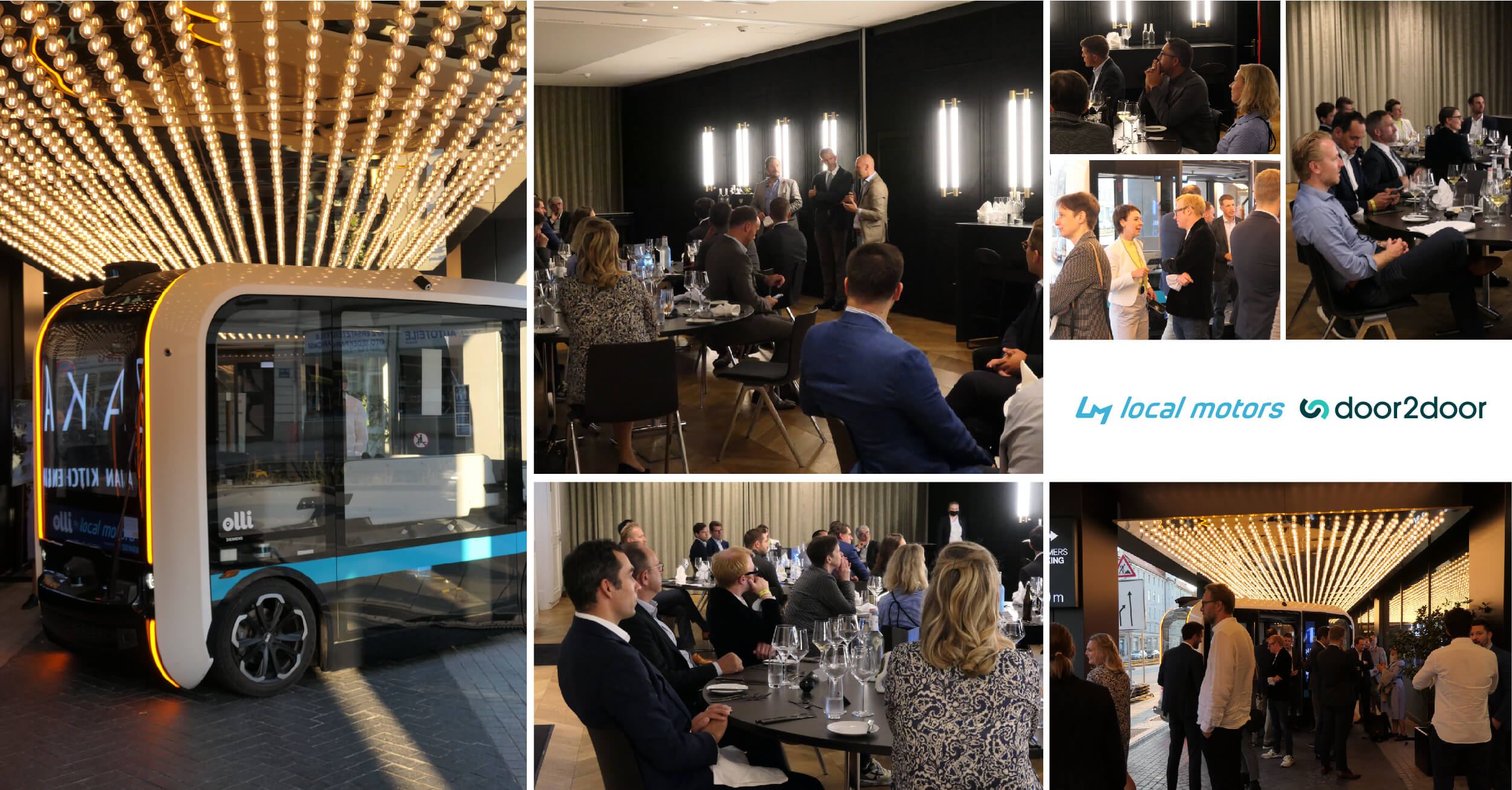
Audience and open spaces
What the IAA Mobility only partially succeeded in doing was attracting the right target audience to the trade fair. For example, we are primarily shaping the mobility revolution with municipalities and public transport operators. However, we hardly noticed them among the trade fair attendees – even if it is precisely these stakeholders who have the opportunity to shape the mobility transition through legislation and public funds, and indeed need to do so, given the challenges of climate change and urbanization.
Open spaces in the city centre are a great asset and could be a future model for the IAA Mobility. Here, citizens could learn more about and test mobility in an atmosphere similar to a Munich folk festival – without having to pay an entrance fee. It’s a pity that trade fairs are generally populated by manufacturers with large, elaborate and expensive stands. Start-ups are fewer in number, and providers of B2C ridepooling, multi-modal apps and other new mobility offers are often hidden behind the larger stands.
Conclusion: Car or mobility show?
In some areas, it is striking that the car is still the primary consideration. And this includes one’s arrival at the trade fair. While large signs on roads from the motorway drew attention to the IAA Mobility, on the train and underground, there was much less publicity. But here, too, habits need to change. The mobility transition needs to be driven by a shift in the mindsets of designers, suppliers and users.
At the end of the day, this IAA has been instrumental in fostering the idea that mobility is based on more than just automotive hardware. Instead, the industry is growing, connecting and creating an appetite for change.
